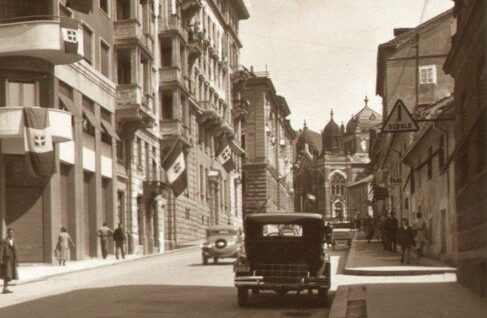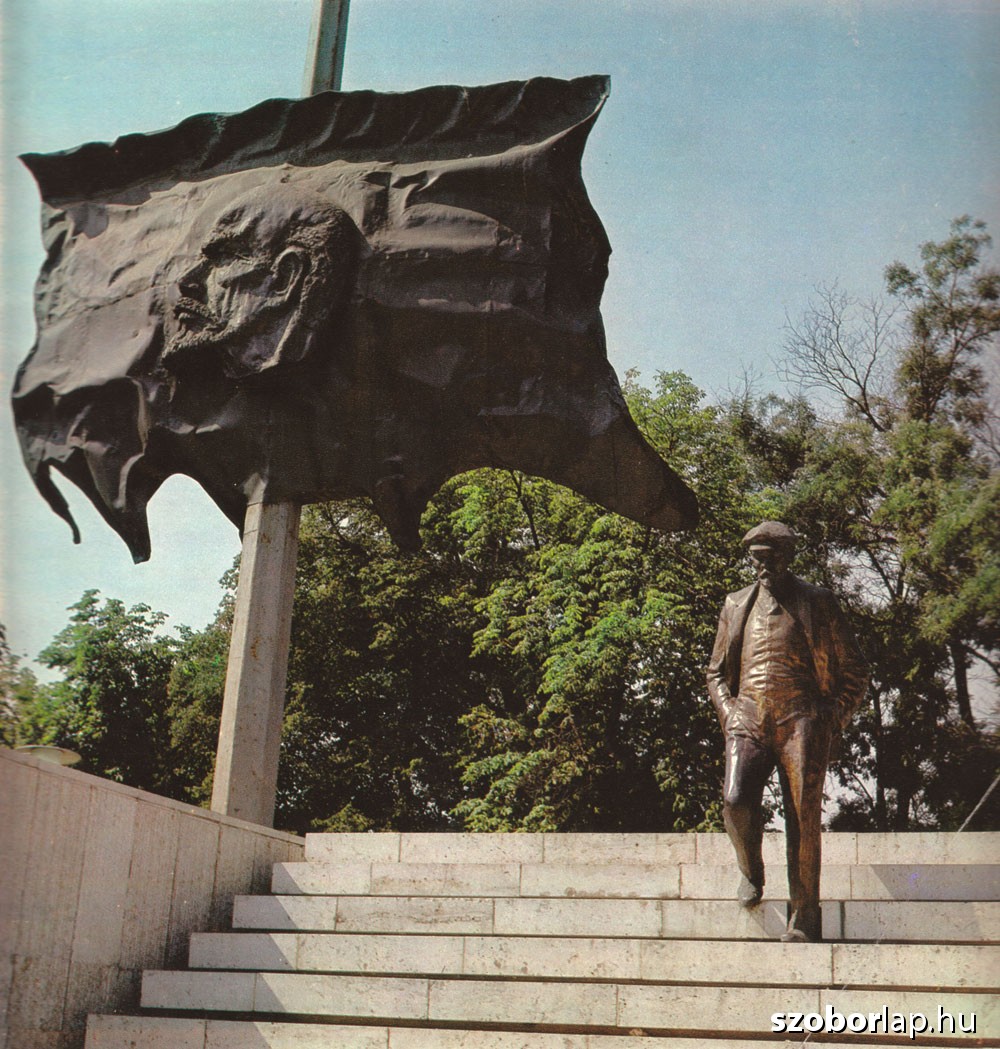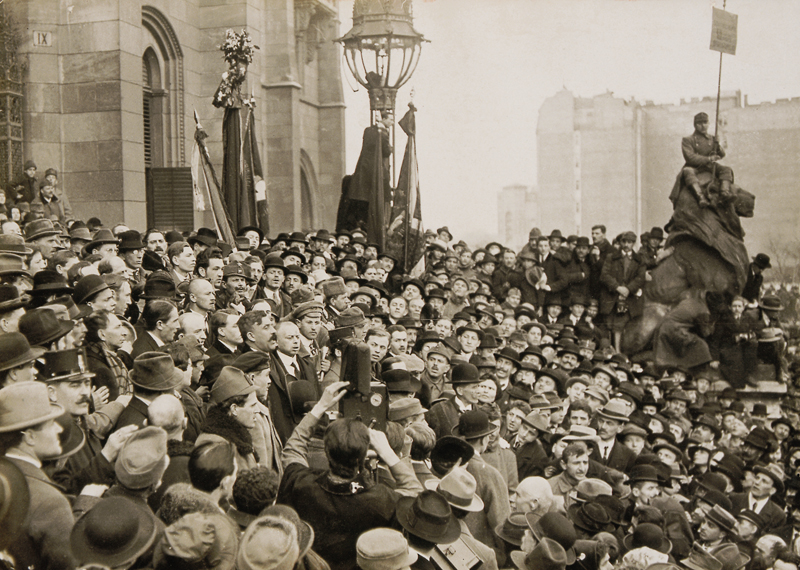If you visit the Croatian port city of Rijeka, as most do, arriving by bus to its main station uncomfortably sandwiched between the maritime customs and a neogothic church, you are extremely close to the epicenter of Hungarian 20th century history. Up the stairs next to the church, if you take a left and walk about two hundred more meters, you are on the street where two very important Hungarian historical figures were born meters apart – János Kádár and Miklós Vásárhelyi.
The street bears the name of neither. Instead, it is named after Fiorello La Guardia, who worked in the US Consulate in Fiume/Rijeka from 1904 until 1906. At the time, the port town was one of the main points of Austro-Hungarian immigration to the United States, so the post of La Guardia was certainly significant, as was the very fact of mass migration which had so profoundly shaped the city’s history. However, there is something indubitably small-towny in the decision to name one of the major throughfares in the center after someone tangentially related to, and ultimately not too significant for, the city just because that person eventually became famous as the mayor of New York.
In any case, memory politics did partially do justice to the two Hungarians, and in a way that reveals a lot about contemporary ideological biases. As you may have guessed by now, the only person willfully consigned to complete oblivion of this trio is the one who was the most significant. The man who was the longest-serving head of state of Hungary in the 20th century, whatever one may think of him, is not in any way commemorated by his hometown, while the other two figures, whatever one may think of them, and who were objectively less impactful, have signs and plaques adorning their names on that street.
For a while, however, Kádár and Vásárhelyi had one major thing in common. Before the Second World War, they were both members of the Hungarian Communist Party. Kádár had joined it in 1931 and Vásárhelyi in 1939. Both had accepted militant class struggle as the only response to Hungary’s deeply ingrained social problems and the rise of fascism. Most significantly, after coming to power and after the process of “Destalinization” had gone underway, both found themselves in high posts in the reformist government of Imre Nagy in 1956. Kádár became the general secretary of the rebranded Hungarian Socialist Workers’ Party, while Vásárhelyi was the press secretary of the Nagy government.
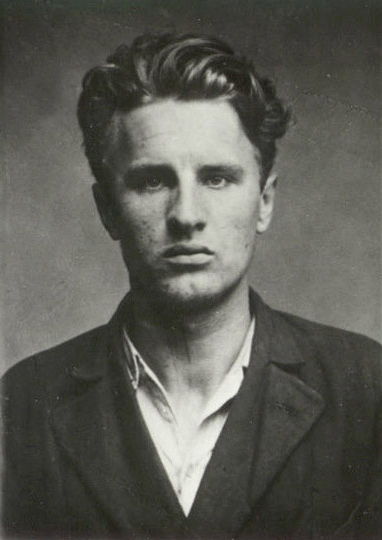
What happened next is well-known: Soviet tanks crushed the Hungarian uprising, and Kádár agreed to a compromise with Khrushchev, leading the state for over three decades and creating a relatively liberal (economically and politically) socialist system that is oftentimes stupidly referred to in English as “Goulash Communism.” Vásárhelyi, however, took another route. After being imprisoned in Hungary for about four years, he was released, he abandoned communism as an ideology altogether, and he became what in another ideologized term of today would be defined as a “dissident.” While you may be compelled to picture a brave dissident having to sit out his days in a small town performing menial jobs, the reality of this position was rather different. Being politically suspect in Kádár’s Hungary essentially meant precarious academic employment, going from one job to another, performing editorial work or writing articles for magazines on the side to make ends meet, sometimes even doing work outside of one’s profession (he had a stint in a construction company). In other words, what is considered the norm for an academic today was political punishment in the scientific world of socialist Hungary, built upon permanent, secure contracts and national research institutes organized according to a central plan.
By the 1980s, Vásárhelyi got a fellowship in the United States, met George Soros, and eventually became a founding member of Orbán’s Fidesz, then still faithful to its foundational liberal ideals. Notably, Vásárhelyi was also the first to propose the idea of creating a “Central European University,” thus planting the seeds for what would become my own alma mater.
Vásárhelyi passed away in 2001, and in 2005, a memorial plaque was placed on the house where he was born. The memorial plaque is already a historical monument of its own, a testament to a long-gone era of triumphalist liberalism, embodied in the collaboration of then-liberal (formally “socialist”) government of Ferenc Gyurcsány, the Soros Foundation, and the City of Rijeka. Kádár, naturally, got no such plaque, and usually even the locals who do know the famous Hungarian politician was born in Rijeka do not know where his actual place of birth was. The answer is – just across the street from Vásárhelyi.
The La Guardia Street of the 1910s, however, then known as Via Honved, embodied a class divide. While the omittance of Kádár today is understandable and the ideological choice to do so is immediately obvious, the essence in the story of two men lies, in my opinion, in their respective places of birth. The house where Vásárhelyi was born, now Fiorello La Guardia 8, is a majestic five-story Art Noveau apartment building, built for the well-off families of the Habsburg Empire’s middle classes. His life path was straightforward: after finishing elementary school and gymnasium, he studied law in Rome and then at the University of Debrecen in Hungary. Certainly, being a clandestine communist militant under one openly fascist and one very pro-fascist regime was no small feat. However, one cannot quite say that Vásárhelyi’s own life was a struggle, especially not relative to Kádár’s.
Kádár was born in the Santo Spirito Hospital, on today’s Fiorello La Guardia 1. It was a hospital serving the poor, and he was the illegitimate child of a young maid serving the aristocrats and the bourgeois of Vienna and Budapest who would come to the nearby resort of Opatija to unwind in their villas. It is worth noting here that Kádár was, physically, even less related to Rijeka than La Guardia. He did not live there for long, not even as a child. This was simply a financial decision by his mother, or rather a decision caused by a lack of finances. His childhood is perhaps best described in his own words:
“I was a servant to a village pig herder, a servant child to a kulak (rich peasant), a vici (janitor) child, a newspaper boy, a 'parcel delivery boy' or courier in the city, and even a briefly homeless evicted person. I worked from 5 in the morning until classes started at [elementary] school, then after the education in the afternoon I had to work again until late at night. Then came the 'beauty' of the life of a skilled apprentice. And finally, when I became a skilled worker – in 1929 – the great economic crisis and unemployment came for us. This is how the entire generation of young workers lived at that time.”
At this point, it is worth pointing out that the last sentence of Kádár’s is quite true: his childhood was far more paradigmatic of the experience of an average Hungarian born before 1918 than the affluent upbringing of Vásárhelyi, the son of a banker. And, if you’ve been to the Hungarian countryside in the past thirty or so years, you have certainly noticed that a lot of people’s lives still (or again?) bear far more resemblance to the destitution of young János Kádár than the affluent cosmopolitan Miklós Vásárhelyi. Sometimes, but not always, minus the child labor.
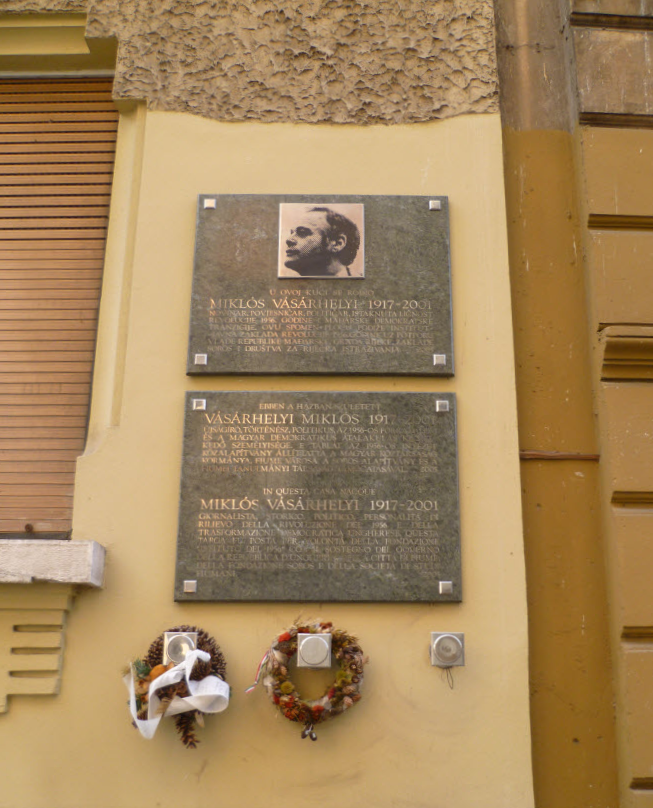
This stark contrast in backgrounds and upbringing explains the vastly different life choices of the two men. Adherence to communism in the twentieth century is very often described in idealistic terms, either as a quasi-religious faith (the most (in)famous example of that being the work of Yuri Slezkine), or as an “idealism” in the colloquial sense of the word, meaning a childish belief in an impossible utopia. Both explanations fail to account for the very real material forces that made people adhere to communism and persist in their belief: the squalid living conditions, the widespread child labor, seldom better working conditions for adults, and still fundamentally feudal relations in the countryside. For people who had experienced these things, not only was there no going back, but going back was rightly seen as an existential threat. Vásárhelyi could have concluded that the capitalist society of prewar Italy and Hungary that he grew up in hadn’t been so bad after all. Kádár could afford no such luxury. They both acted in accordance with their experiences.
The ideological choice of commemorating Vásárhelyi and forgetting Kádár is thus not merely a consequence of the tendency to venerate End of History Liberalism, but also of a far more fundamental attempt to erase the history and experience of the lower classes and reduce the Long Nineteenth Century to a romantic era of pretty buildings and outfits, eventually mysteriously disturbed by political “extremisms” of the right and left. Even someone like Kádár is much more “useful” if presented as a grey, obedient communist bureaucrat than a person who had to work for sixteen hours a day as a seven-year-old child. This enables us to live in a world in which we pretend that a place like Austria-Hungary was a romantic urban Cosmopolis where everyone drank Julius Meinl coffee while eating their Sachertorte on a Tuesday afternoon, smiling lovingly at the childish innocence of Empress Sissi, who, naturally, lived only slightly better off than her subjects. As is, after all, only befitting our romanticized rich rulers, then and now.

